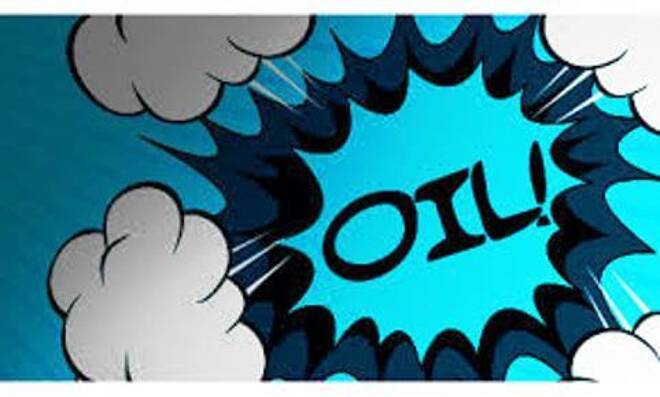Advertisement
Advertisement
Oil Prices Continue To Bottom Out
By:
Crude oil continued to fall reversing earlier gains to end the day down 83 cents at 41.09 as traders wondered if it would fall below the $40 price. The
Crude oil continued to fall reversing earlier gains to end the day down 83 cents at 41.09 as traders wondered if it would fall below the $40 price. The bears are dominating the market place. Brent oil is down 71 cents to 43.20. Oil inventories and the stronger US dollar continue to weigh on oil prices while future demand is also pushing prices down. In its weekly petroleum report, EIA reported a 1.7-million-barrel increase in the U.S commercial crude oil inventories for the week ending July 22, 2016. At 521.1 million barrels, U.S crude oil inventories were at historically high levels for this time of the year. On the other hand, gasoline inventories increased by 500,000 barrels and were well above their average range.
The U.S gasoline stocks, which have now increased 5 times in the last 6 weeks as per EIA, are currently at their highest seasonal levels since 1990 and are responsible for the current oil price slump. Even distillate fuel inventories, which decreased by 800,000 barrels as per EIA, are well above their average range. In spite of rising U.S gasoline glut, EIA reported that the U.S gasoline production increased last week and averaged 10.1 million barrels a day. Because of a weak product demand, any increase in gasoline production will further increase gasoline stocks and this will put further downward pressure on oil prices.
The glut of gasoline and other refined products has taken center stage for the oil markets, threatening to initiate a new bear market and push oil prices down below $40 per barrel for the first time in months. But while a surplus of refined products is weighing on crude prices, there could be another culprit that does not get as much publicity.
Goldman Sachs says that a strong dollar deserves more blame for an oil price downturn, and further strengthening of the greenback looms as a much larger threat to prices than the gasoline glut. The U.S. Federal Reserve could raise interest rates and the effect of that, combined with lingering global financial uncertainty, could push oil prices below $40 per barrel. Goldman says that while there is indeed a glut of gasoline, it won’t be responsible for further declines in oil prices because it is a supply-side and not a demand-side problem.
There are several other factors that could push oil back down to $35 per barrel or lower. They include a return of production from Libya or Nigeria (unlikely, but not impossible), a global slowdown in demand, or China’s move to slow its stockpiling of crude for its strategic petroleum reserve.
Oil prices soared from 13-year lows in the first half of the year due to rising demand, falling U.S. production, and unplanned supply outages in Nigeria and Canada. Oversupply worries never went away, however, and a Wednesday reading from the Energy Information Administration on U.S. oil stockpiles showed that demand for oil is coming up shy of expectations.
Typically, oil prices are viewed as the life blood of the global economy, said Nicholas Colas, chief market strategist at Convergex, in a recent note.
With stocks near records in a relatively low-volume, narrow trading range and oil prices on the downturn, Colas sees oil and stocks falling back into a familiar rhythm.
“The simple reason is that, over the short term, oil prices reflect market sentiment about demand,” the strategist noted. “Yes, oil trades at $42 now versus +$100 a few years ago because of supply reasons. But supply over the short term is relatively fixed, while confidence regarding demand sways with the breezes of global economic sentiment.”
Oil prices have been on the decline lately as the summer driving season wraps up and demand for gasoline falls off. At the same time, the number of active U.S. oil rigs has risen seven out of the past eight weeks as oil hit a high on the year of just over $50 a barrel in early June. With less demand and signs of higher production, oil prices have been trading at their lowest levels since mid-April.
About the Author
Barry Normanauthor
Did you find this article useful?
Latest news and analysis
Advertisement
